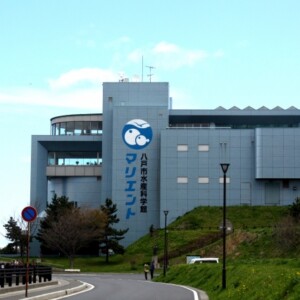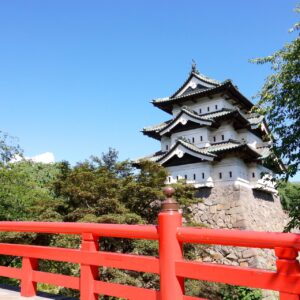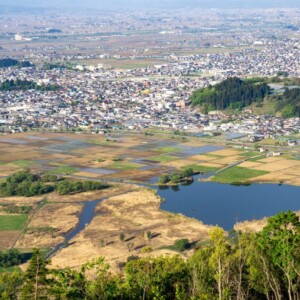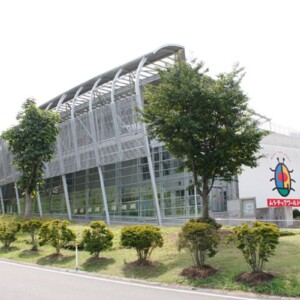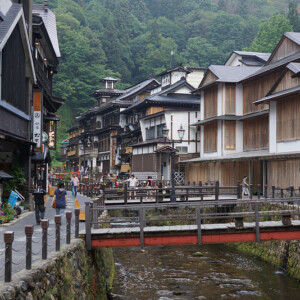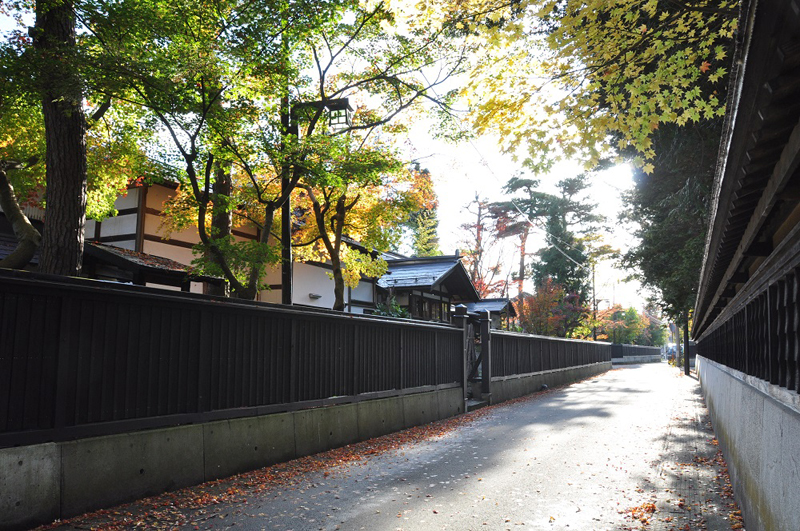
Yokote's history and current cityscape, which has been the setting for many conflicts [Akita Prefecture]
table of contents
- 1 The Onodera clan, a powerful clan from Dewa Province, advances into Yokote and builds Yokote Castle
- 2 During the Edo period, when the area was under the control of the Satake clan of the Kubota domain, the castle town was developed by the Tomura clan
- 3 During the Boshin War in the early Meiji period, Yokote was reduced to a burnt wasteland
- 4 Yokote Castle ruins and samurai residence street undergoing development
- 5 Haguro Town Samurai Residence Street has been restored and restored to its original state
- 6 Omachi Street, a townspeople's district during the Edo period
Yokote City is located in the Yokote Basin, in the southeastern part of Akita Prefecture, adjacent to Iwate Prefecture to the east
During the Heian period, it was under the control of the Kiyohara clan, and is known as the site of Gosannen War also flourished as a post town (Yokote-juku) on the Ushu Kaido road, which connected Koori-juku on the Oshu Kaido road
The Kiyohara clan, a powerful clan in Dewa Province with its base in Yokote, fought the Gosannen War (1083-1087), a struggle for supremacy caused by an internal feud within the clan. As a result, the only survivor was a relative (son of the second wife), Kiyohara Kiyohira, who was not directly related by blood to the Kiyohara clan
Kiyohira later changed his surname to Fujiwara, his father's, and moved his base from Yokote to Hiraizumi (Iwate Prefecture), ruling over the Tohoku region. For the next 100 years or so, he built the foundations of Hiraizumi's golden culture as the Oshu Fujiwara clan
After the fall of the Oshu Fujiwara clan, Yokote continued to be ruled for a time by clans such as the Hiraga clan, who were appointed as land stewards by the Kamakura shogunate
The Onodera clan, a powerful clan from Dewa Province, advances into Yokote and builds Yokote Castle
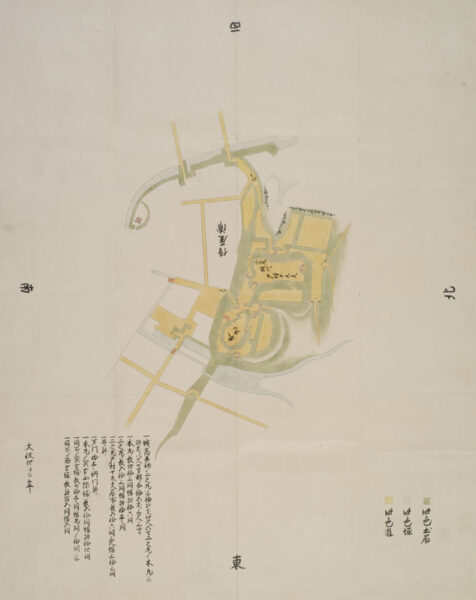
During the Muromachi period, the Onodera clan, who had their base in Ogachi County, expanded into Hiraka County and established their base in Yokote. Yokote Castle is said to have been built by Onodera Terumichi around 1550, and is also known as Asakura Castle. It is believed that the castle town was also developed around this time
During the Azuchi-Momoyama period, when Oda, Toyotomi, and Tokugawa were vying for supremacy, the Onodera clan is said to have had a vast territory stretching from southern Akita Prefecture to northern Yamagata Prefecture, and had as many as 470 castles
However, due to constant conflicts with neighboring lords and family defections, their power gradually declined
battle of Sekigahara between the Toyotomi and Tokugawa sides , the Onodera clan was deemed to have sided with Toyotomi, and therefore had their territory confiscated by Tokugawa Ieyasu, and the lord was exiled to Tsuwano in Iwami Province (Shimane Prefecture), bringing an end to the Onodera clan's rule.
During the Edo period, when the area was under the control of the Satake clan of the Kubota domain, the castle town was developed by the Tomura clan
During the Edo period, Yokote became the territory of the Satake clan of the Kubota Domain (Akita Domain). The Kubota Domain built a new castle in Kubota (Senshu Park, Akita City) and made it their base
As a result, Yokote Castle became a subsidiary castle of Kubota Castle. Even after the Edo Shogunate issued the One Castle per Province Order in 1615, which allowed each domain to have only one castle, while most subsidiary castles across the country were demolished, Yokote Castle, along with Odate Castle (in Odate City), continued to exist as a subsidiary castle of the Kubota domain
This was an unusual measure even for the Edo Shogunate, and is one of the few examples in the country
The Date, Suda, and Tomura clans were appointed to Yokote Castle as castellans for the Kubota domain, but after Tomura Yoshitsura became castellan in 1672, the castle was passed down through generations of the Tomura clan until the Meiji era
The Satake clan made great efforts to improve roads such as the Ushu Kaido and the river transportation network along the Omono River, and also actively worked to bring in goods and Kamigata culture from the Kitamae ships that called at Tsuchizaki Port at the mouth of the Omono River
During the Boshin War in the early Meiji period, Yokote was reduced to a burnt wasteland
Yokote had been relatively peaceful for 200 years during the Edo period, but then a major shock hit the area
In 1867, power was returned to the Emperor through the Meiji Restoration. The feudal domains of the Tohoku region, which had been completely left out of the loop, fell into chaos. The new government, which had gained control of the Kanto region and westward by winning the initial battles of the Boshin War, began issuing various orders to the feudal domains of the Tohoku region
In response, the various domains were divided into those that opposed the new government, those that followed the new government, and those that were ambiguous. As a result, efforts were made to unify their views, and the Oshu- Uetsu Alliance of Domains was formed, centered around the Sendai, Aizu, and Yonezawa domains, and the entire Tohoku region decided to fight against the new government forces.
The Kubota clan initially joined the Oshu-Uetsu Alliance, but was not very enthusiastic about it, and eventually withdrew and joined the new government forces
As a result, the Sendai and Shonai domains attacked, and Yokote in particular became the center of the fighting . The defenders of Yokote Castle set fire to the castle and retreated, and the town was almost completely burned down by arson attacks by the attackers.
Yokote Castle ruins and samurai residence street undergoing development
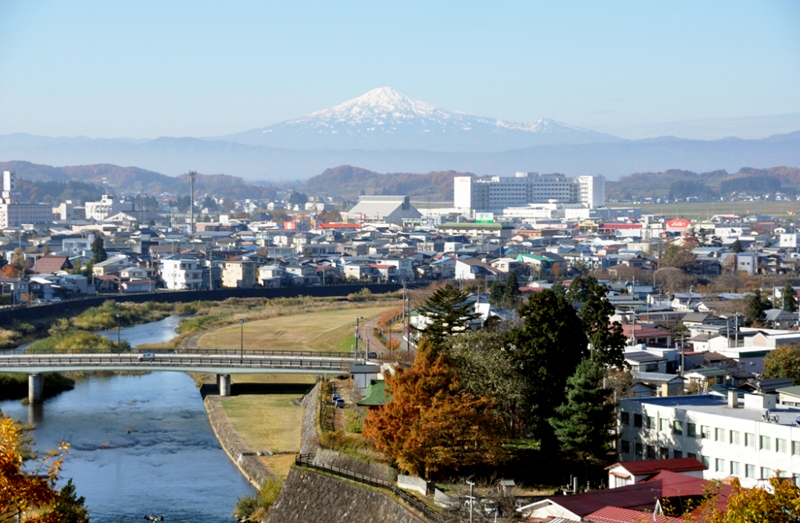
In 1879 (Meiji 12), Akita Shrine was built on the site of Yokote Castle, using the remains of the castle that survived the fire
After that, it was developed into a park from the 1900s onwards. In 1965 (Showa 40), a three-story castle tower-style observation deck (replica castle tower) commonly known as Yokote Castle and the Peace Kannon were built on the site of the Ninomaru
The interior of Yokote Castle is an exhibition room where items related to Yokote Castle are on display. Also, from the observation room on the fourth floor, you can see the Yokote Basin spreading out before you and the majestic Mount Chokai in the distance

Yokote Park <Information>
- Facility name: Yokote Park
- Address: 29-1 Shiroyamacho, Yokote City
- Phone number: 0182-32-1096
- Opening hours: 9:00-16:30
- Admission fee: 100 yen, free for junior high school students and younger
- *Common to all four facilities: Yokote Park Observation Deck, Kamakura Community Center, Gosannen War Kanazawa Museum, and Ishizaka Yojiro Literary Memorial Museum
- * Walking around Yokote Park is free
- Opening period: April 1st to November 30th, during the Kamakura festival in February
- URL: Yokote Park
Google Map
Haguro Town Samurai Residence Street has been restored and restored to its original state
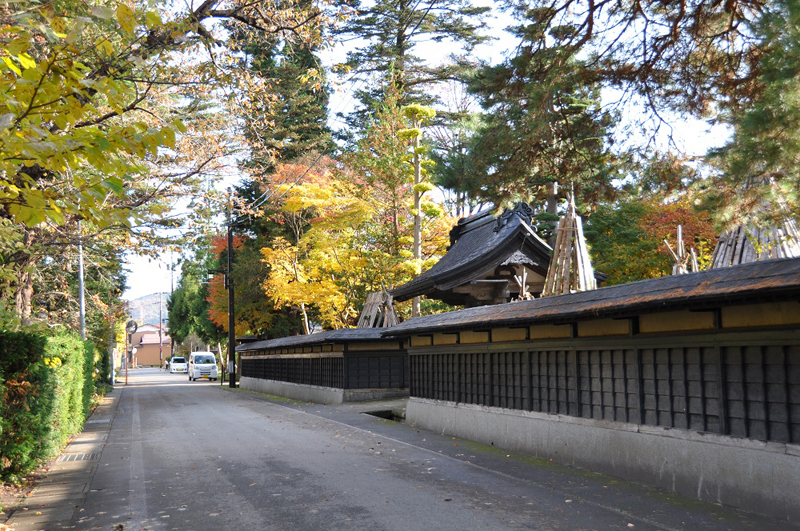
The samurai residences in Yokote were burned down during the Boshin War, but efforts to restore the old town began in the 1980s
Since the Heisei era began, active development has continued as part of the "Townscape Environment Improvement Project," and in Haguro Town, where the residences of mid-ranking samurai were lined up, a townscape of samurai residences has been recreated with a unified design, including black walls and plantings
is also the venue for Yokote City's signature winter event, the Kamakura Festival
Haguro Town Samurai Residences Street <Information>
- Facility name: Haguromachi Samurai Residence Street
- Location: Hagurocho, Yokote City, Akita Prefecture
- Phone number: 0182-32-2408 (Yokote City Construction Department, Urban Planning Division)
Google Map
Omachi Street, a townspeople's district during the Edo period
During the Edo period, the castle town of Yokote Castle was a samurai town on the castle side of the Yokote River, and a townspeople town along the outer Ushu Kaido road
Omachi along the Yokote River was the center of the town for merchants, and although buildings from before the Edo period were reduced to ashes during the Boshin War, several buildings from the Meiji and Taisho periods remain
Kimuraya Honten, a confectionery shop founded in the Meiji era (Nationally Registered Tangible Cultural Property)
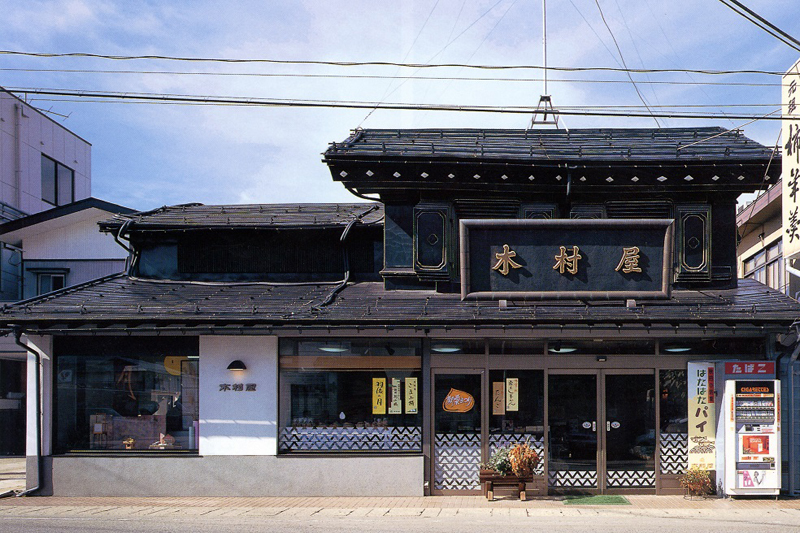
Kimuraya is a confectionery shop that was opened in the late 1880s by its founder, who trained in confectionery making at Kimuraya in Tokyo and other places before returning to Yokote. The store name comes from a franchise granted by Tokyo Kimuraya, and the main store building was constructed around 1904 (Meiji 37). In 1924 (Taisho 13), the building was renovated by the engineering department of Morinaga Western Confectionery Factory (Morinaga & Co.), with which the company had a friendly relationship
Kimuraya Main Store <Information>
- Facility name: Kimuraya Main Store
- Address: 5-23 Omachi, Yokote City, Akita Prefecture
- Phone number: 0182-32-0700
- Business hours: 9:30-17:30
- URL: Kimuraya Main Store
Google Map
Hiragen Ryokan (a nationally registered tangible cultural property) currently operating as a wedding venue
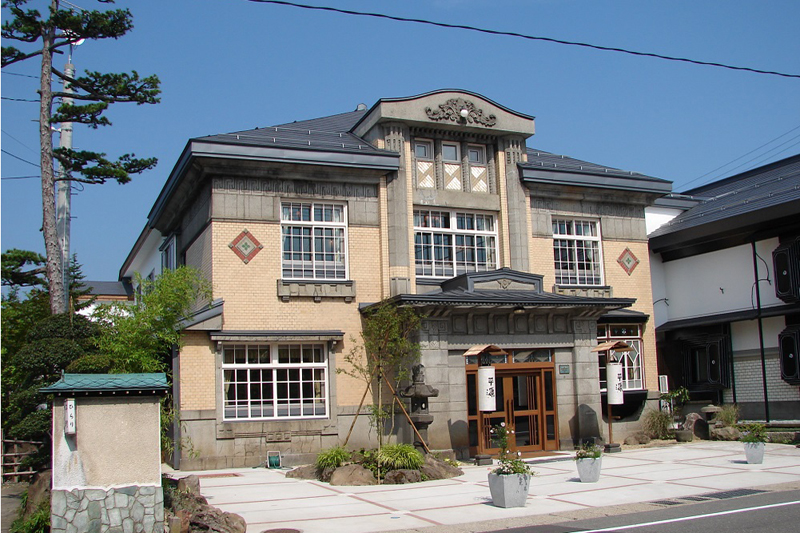
Hiragen Ryokan was founded in 1873 (Meiji 6) as a ryokan, originally a dyeing shop called Hirataya, which was established in the Edo period. The storehouse, built in the Meiji period, and the main building, built in 1926 (Taisho 15), remain intact, but were renovated in 2012 (Heisei 24) and are now open as Guest House Hiragen, a wedding venue and restaurant
Heigen Ryokan<Information>
- Facility name: Guesthouse Heigen (Heigen Ryokan)
- Address: 6-24 Omachi, Yokote City, Akita Prefecture
- Phone number: 0182-33-1100
- Business hours: 10:00-17:30
- Closed: Tuesdays, Wednesdays, Obon, New Year's holidays
- URL: Guesthouse Hiragen




![The battle for bone flesh unfolded in Yokote Basin: "Three Years of Second Year Battle" [Akita Prefecture] 0fb6939d60ada03f05f13ef893cd6663](https://jp.neft.asia/wp-content/uploads/2023/07/0fb6939d60ada03f05f13ef893cd6663-150x150.jpg)
![The Tozawa clan, which first owned the Senboku Kakunodate, rose to the lord of the Shinjo domain, and was the winner of the daimyo [Senboku City highlights 1] Samurai Mansion Cherry Blossoms_Tazawako Kakunodate Tourist Association](https://jp.neft.asia/wp-content/uploads/2025/07/3fef851952b498c8632b4304dc38a889-150x150.jpg)
![Hot springs gush out in a place where there are no volcanoes! "Yuzawa Geopark" where you can see the mystery of the earth up close [Akita Prefecture] 4550228_m](https://jp.neft.asia/wp-content/uploads/2023/02/4550228_m-150x150.jpg)
![A trip to Doroyu Onsen in Akita Prefecture, depicted in the 31st trip of the manga "That's Journey" [Akita Prefecture] 30422261_m](https://jp.neft.asia/wp-content/uploads/2025/11/30422261_m-150x150.jpg)
![Hiyama Ando clan, ruled Akita during the Sengoku period and based in Noshiro [Akita Prefecture] Akita Fan](https://jp.neft.asia/wp-content/uploads/2025/03/0275d341934f847be3452ea4662d9a4e-150x150.jpg)
![[Series ⑥: The role of the first nine years and the role of the second three years] From the internal conflict in the Kiyohara clan to the battle for the family succession, the role of the third year after it was considered a private war Three years later 1](https://jp.neft.asia/wp-content/uploads/2023/12/c0edc0a05afd06375d9f91bd4b7c9472-150x150.jpg)
![The place you should not come and the phantom checkpoint "Nakura no Seki" written in waka poetry [Fukushima Prefecture] 0438-016](https://jp.neft.asia/wp-content/uploads/2022/11/0438-016-150x150.jpg)
![For some reason, do they have a lot of unusual names? Station names on the Ou Main Line [Fukushima, Yamagata, Akita] 27651763_L](https://jp.neft.asia/wp-content/uploads/2024/05/27651763_l-150x150.jpg)

